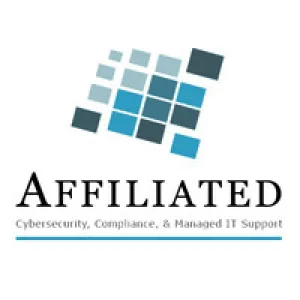In many organizations, IT planning and budgeting seems to be an afterthought - or covered with the "last year we spent X on IT, so let's add 3% -5% and focus on other areas". This approach does not take into consideration your business goals/needs, staff growth, lifecycle demands, new application requirements or even changes mandated by government regulations.
Once the year starts, the "gotchas" (or forgotchas in many cases) begin to
unfold, and everyone seems to point the finger at the CFO because "they never approve anything…". It is one of those "WTH" moments that happen far more than it should.
However, it does not have to be that way.
Many organizations really do not know the impact that IT has on the business - "sure if e-mail (or the ERP, or…) stopped, we'd have a real problem". This is true, yet the actual financial impact of the technology function is often overlooked, and for many organizations, spread across various departments. What is the TRUE COST of your technology - and how DOES it benefit the organization?
A simple way to get started is to look at all of your IT related expenditures for the current calendar year, then define what they are used for AND the perceived value those expenses bring to the organization. This will help you determine your existing expenditures - not just the expense, but value you are receiving for the money spent.
Once you have this data compiled, you can begin grouping expenses into segments matched to business categories (core applications, user tools, workstations, servers, productivity tools, security, etc.) which can be summarized for further review. In smaller organizations, a spreadsheet is an adequate way to document your expenses, categories, and segments.
For example, say you have charges linked to hardware purchases, by grouping those charges as they apply to a workstation, or data center (hosting environment) you are able to more accurately identify that expense/investment. You might consider creating segments, or categories, for maintenance and warranties, workstation software, data center software, application software purchases and annual maintenance, connectivity, backups and disaster recovery, and third-party consulting services. For those who have an internal IT staff, you will also want to recognize staff salaries and benefits. You should also document whether the "asset" is purchased, or a subscription (usually for cloud-based services/solutions).
Once you have gathered this information and segmented it, you can start to review it and better understand your technology expenditures, and exactly on what, and where, you are spending your IT dollars. It may be revealed that you are spending monthly on multiple tools that appear to do the same things (e.g. multiple collaboration or "team" tools; the same software subscribed to by multiple departments with no consolidated management or control).
As you begin to group these segments into categories, you will soon be able to see how much of your "asset" expenditures are going to "core" or base segments. For instance, how much is going to maintenance, and how much to innovation or growth. By realizing these expenditures for what they truly are, you will be able to easily identify trends within the organization, that may prompt further opportunities to look at alternative approaches to accomplishing your goals.
The next step in the process is to understand those items that might need to be replaced, identify potential changes to the environment or other business related changes based on your organization's business plan. For example adding a new office, moving offices, changing staff numbers based on additional business growth are all considered to be expenses and expendures.
Once there is an understanding of your expenses and expenditures, the focus may then shift to a review of the significant changes that may be needed for the organization, examining in detail what the plans are for next year. Some organizations are proactive regarding lifecycle management. These folks have documented and know the age of their systems, so they are able to plan for the adjustments to their system. Some organizations prefer to operate on the "if it's not broke, don't fit it" ideology. These folks use their devices and servers until they break or cause significant disruption to the business, and then must react quickly in hopes of preserving their business because they have not developed a proactive plan for upgrades or replacements.
While this last approach may not have been as detrimental a number of years ago, the changes in technology and the increased reliance on the systems using that technology has moved the benchmark, and we highly recommend instituting a lifecycle management process as a guide for your technology assets. These lifecycle timelines may vary based on your organization's needs, asset type, and overall value to the business. That said, you may want to consider a management plan as guidance for your application and operating system software. Many organizations use the "current version minus X releases" (usually it is no more than 2 releases behind) as the minimum expectation for key applications. For example, if the current version is V2018, they would be at least on V2016, such that when V2019 is released, they would plan to upgrade to, at the very least, V2018 so they would be positioned well for 2 years before the next release.
With your current expenses, plans for changes, and your lifecycle upgrades clearly defined, you can then work on defining the "competitive advantage" functions. These refer to how you want to keep your IT aligned with your business plans, then you can proceed to create your financial plan for the year.
The competitive advantage may be new software, rolling out different devices to allow your teams to be more productive and effective in their roles, "fixing" an issue known to plague your competitors and for which you have identified as needing to get current. Perhaps you are interested in using new technology to change how you do something - process orders in the warehouse/address scalable e-commerce needs/incorporate analytics for faster decision making - these are items that will require planning and investment of funds and should be included in your plan.
Now that the components are assembled, you are able to pull your plan together. As a suggestion, you might group expenditures into three categories: Business Changes (to incorporate changes the business is requesting - many of these are capital expenditures); Operational Upgrades (changes based on lifecycle management direction - a number of these might be capitalized as well); and Operational Expenses (this includes the day to day technology operating expenses for the organization - connectivity charges, repair, maintenance, warranty charges, operations supplies and equipment, salaries, and third party charges to manage the operations or security).
Using this approach allows you to view each section and help the finance team to better understand current, as well as potential future, expenditures. For smaller organizations, a scaled down version of this process would be suitable to understand your IT expenditures and see business opportunities.
As you compile your financial plan, you may use the following to determine your budgeted projections. For items falling within the Business Changes and Operational Upgrades areas, use estimates to determine potential and planned expenditures with an understanding of their business value. Conversely, the Operational Expenses section should draw on actual figures, plus planned annual upcharges. These should be evaluated to validate if they are still valid or if they are even necessary (e.g., renewing a 5-year Internet agreement without renegotiating the rates - you'd be surprised how many times those agreements are auto-renewed).
With this completed, you can make positive, informed decisions with the leadership team, even involving business units in their requests, thus building a solid, accurate plan for your IT team, while ensuring alignment with your organization's goals. This roadmap provides the path; keeping it reviewed and updated will ensure it remains clear and help you maximize one of your most valuable assets.
Many of our customers are benefiting from our 6Q planning process to aid in planning and budgeting and ultimately keeping their IT assets and resources aligned with their business plans. If you'd like to learn how we can help you maximize the value of one of your most important assets, call Mike Moran at 800.626.3223 and he will be happy to coordinate the appropriate resources for a conversation with you.




